Start of topic | Skip to actions
Back to Phase 2
As in the Phase 1 simulations, there is a shocktube gas (gas1)
and a lensing gas (gas2) related by a density ratio (gas2 / gas1 ) of 1.4. The shocktube gase (gas1) has gamma=1.5, while the lens (gas2) has a gamma of 1.4.
In addition to these two gases, there is a target gas inside the wedge (gas3). For the simulation presented here,
the target gas was taken to have gamma 1.09 and a density related to gas2 by gas3/gas2 = 5. This would be consistent
with using Air for the lensing gas and SF6 for the target gas.
Unlike the 2D Phase 2 simulations with interface perturbations, no perturbations were put on the interface between the lens and target to stimulate the development of a Richtmyer-Meshkov instability. Interestingly,
an RMI does develop in this case. The flow behind the shock has an azimuthal dependence as can be seen by the
shape of the lens interface after the shock. This simulation suggests that this dependence ultimately destabilizes the interface between
the lens gas and the target gas (the Air/SF6 interface).
The extended clawpack solvers were used for this simulation, the code is documented and the Phase 2 input files can be found in the repository. A base resolution of 250x100 was used with 4 additional levels of refinement (factors 2,2,2,2).
Here is a series of images showing the density feild as this flow evolves. These
snapshots are taken from this animation.
- time t=0.27ms: the shock has been lensed into a circular form
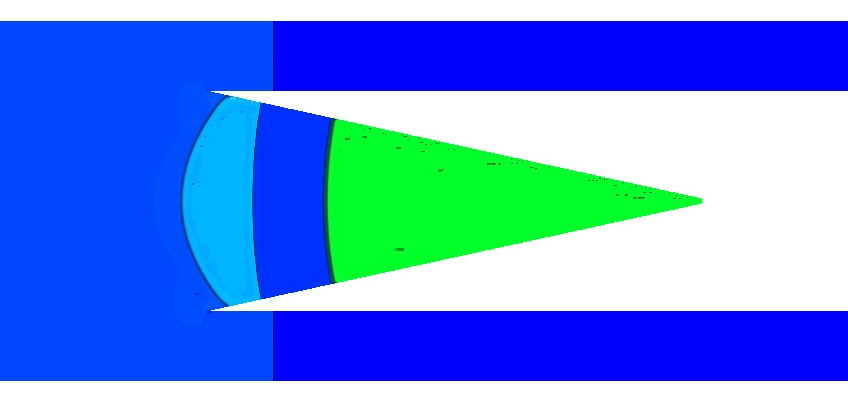
- time t=0.9ms: slight loss of radial symmetry in Air/SF6 interface
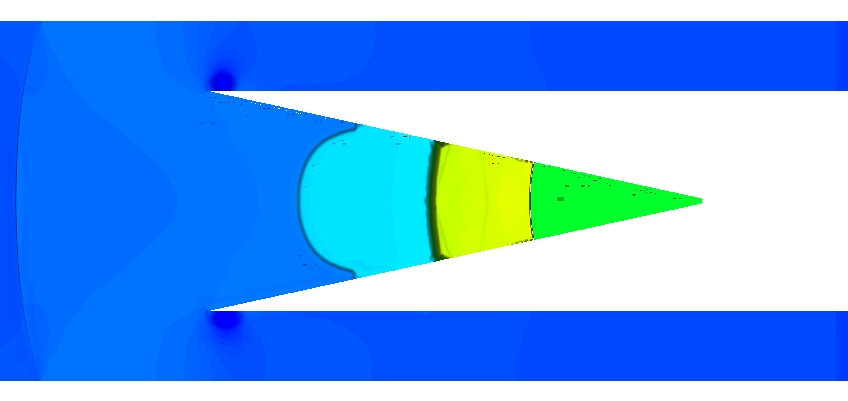
- time t=1.63ms: shortly after shock reflection off apex
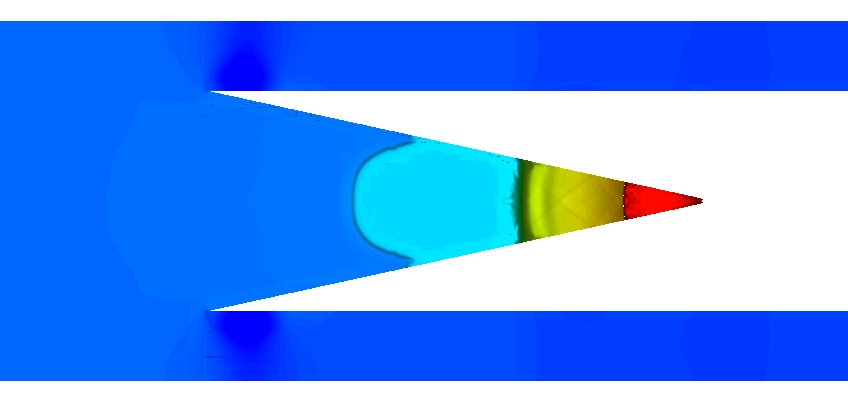
- time t=2.07ms: just after reshock of Air/SF6, and during shock interaction with lens
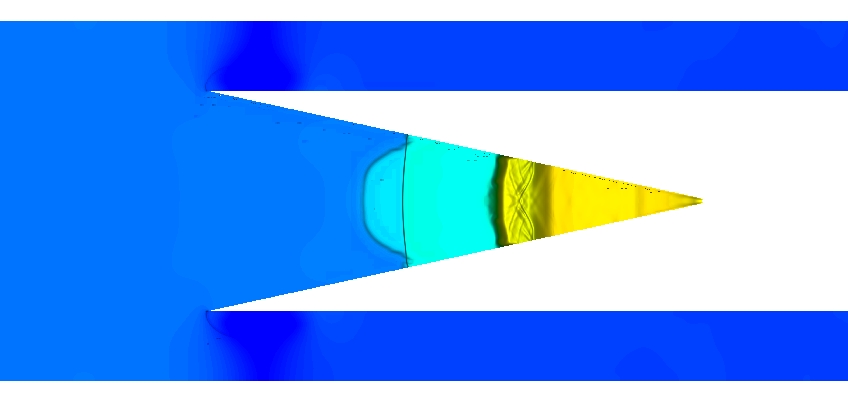
- time t=2.43ms: shock near exit of domain
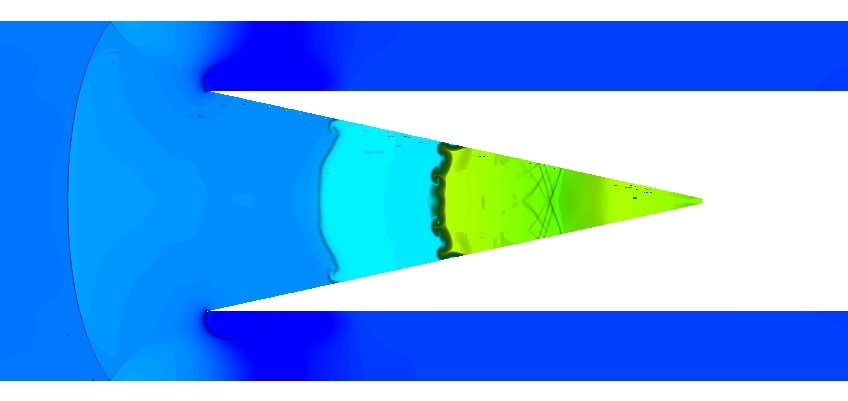
- time t=3.51ms: much later evolution of mixing area
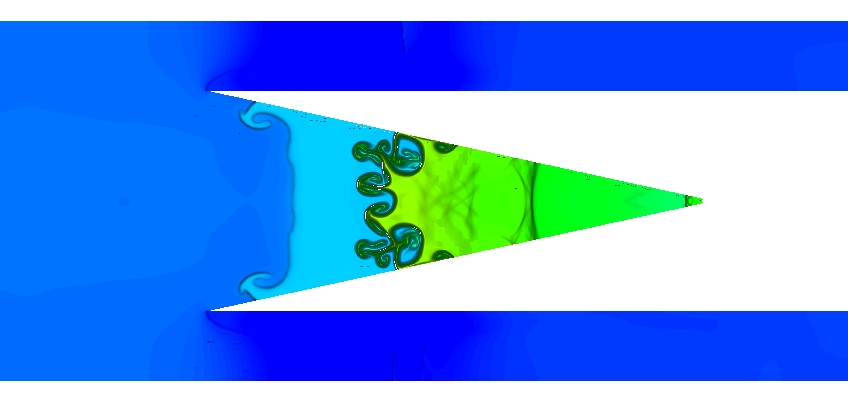
| I | Attachment  | Size | Date | Who | Comment |
|---|---|---|---|---|---|
| | Phase2wNoPert.avi | 626.6 K | 31 Oct 2005 - 01:16 | DavidHill | Animation of the shock focusing |